Solar energy is the most prevalent source of sustainable energy on this planet. The amount of energy from our sun that hits our world every ninety minutes is enough to power our civilization for an entire year!
Solar panels work by converting the light radiation from the sun to Direct Current (DC) electricity through a reaction inside the silicon layers of the solar panel. The sun’s energy is absorbed by PV cells, which creates electrical charges that move in a current.
We will look at the following vital aspects of solar panels in this discussion:
- Photovoltaic basics
- What solar panels are made of & types of solar panels
- How solar panels use sunlight to generate electricity
- How solar panels work to provide electricity to your home
- How much money can you save using solar panels
Let’s examine this process in more detail to understand better how solar panels convert the sun’s abundant energy into electricity.
First, let’s look at the components of sunlight itself and how it creates electricity in solar panels.
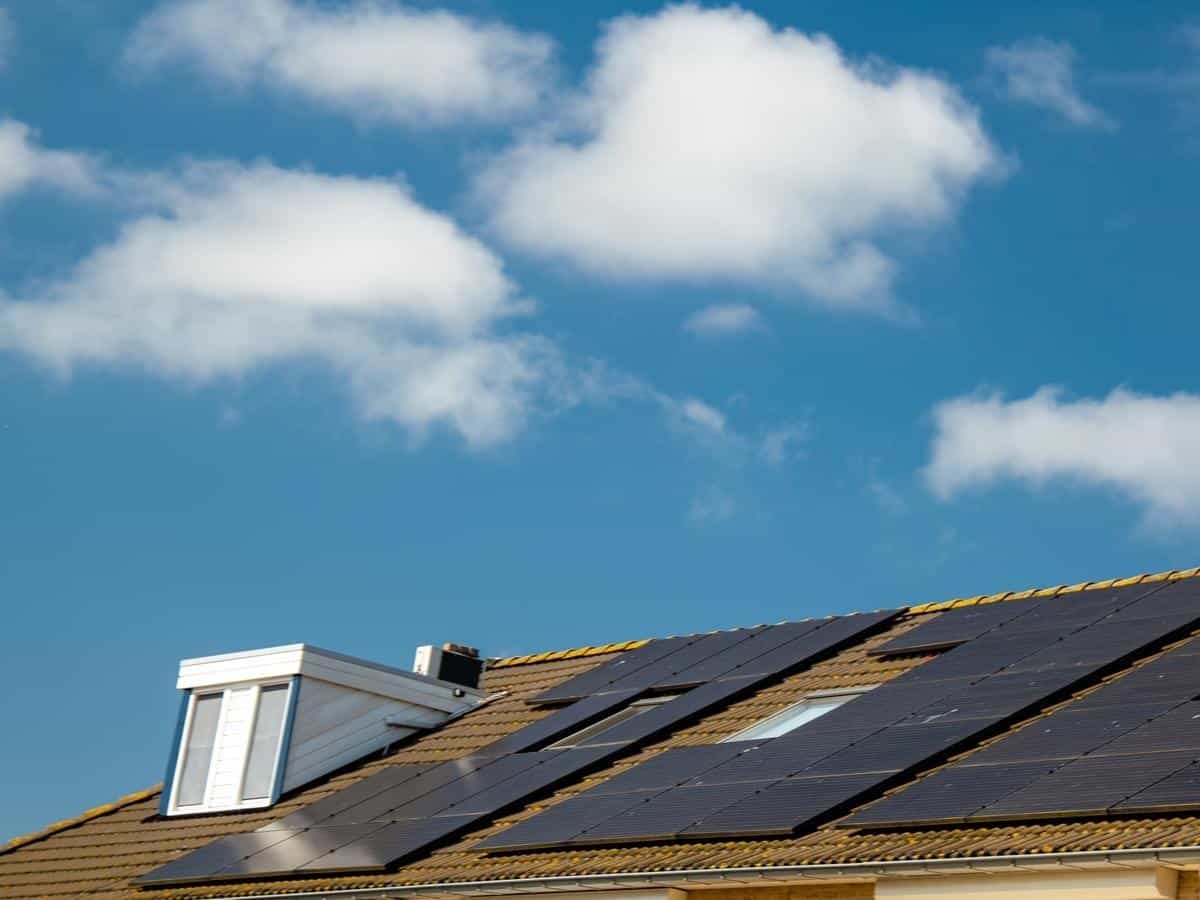
The Basics Of Photovoltaics
To understand how photovoltaics (PV) works, we need to know a little about the makeup of sunlight and which part is responsible for generating electricity in solar panels.
Using the sun for energy is by no means a new idea. Still, the advent of solar panels and the increasing use of this technology make this option very affordable for business and residential energy supply.
The Composition Of Sunlight
Sunlight comprises the full range of the electromagnetic spectrum from infrared to ultraviolet, but solar panels only use a limited range of this spectrum to generate electricity.
Ultraviolet and infrared are the highest and lowest ends of the radiation spectrum and inefficiently generate electricity in solar panels. They don’t generate enough energy (infrared) and too much (ultraviolet) to be suitable in PV.
Solar panels use the spectrum between red and violet to create the electrical fields in the panel and thus utilize the electrical current to provide electricity.
See also: What Are Solar Panels? (How They are Made)
What Are Solar Panels Made Of?
Solar panels are made of semiconductor material, usually silicon and glass, and small portions of other metals like boron that create the necessary electric and magnetic fields that produce the flow of electricity.
Types Of Solar Panels
There are three types of solar energy systems and two types of panels, the PV panel, the solar thermal panel, and concentrated solar power or CSP collectors.
PV uses the sun’s light to create electricity, which can be used for residential and commercial supplies.
Solar thermal panels use the sun’s heat, and most of these are used to heat water. Concentrated Solar Power has an array of mirrors to focus the sun’s energy into collectors that convert that energy into heat.
CSP systems are used in large power plants, while solar thermal systems are used to power solar thermal air conditioners and heat water in residential and commercial installations.
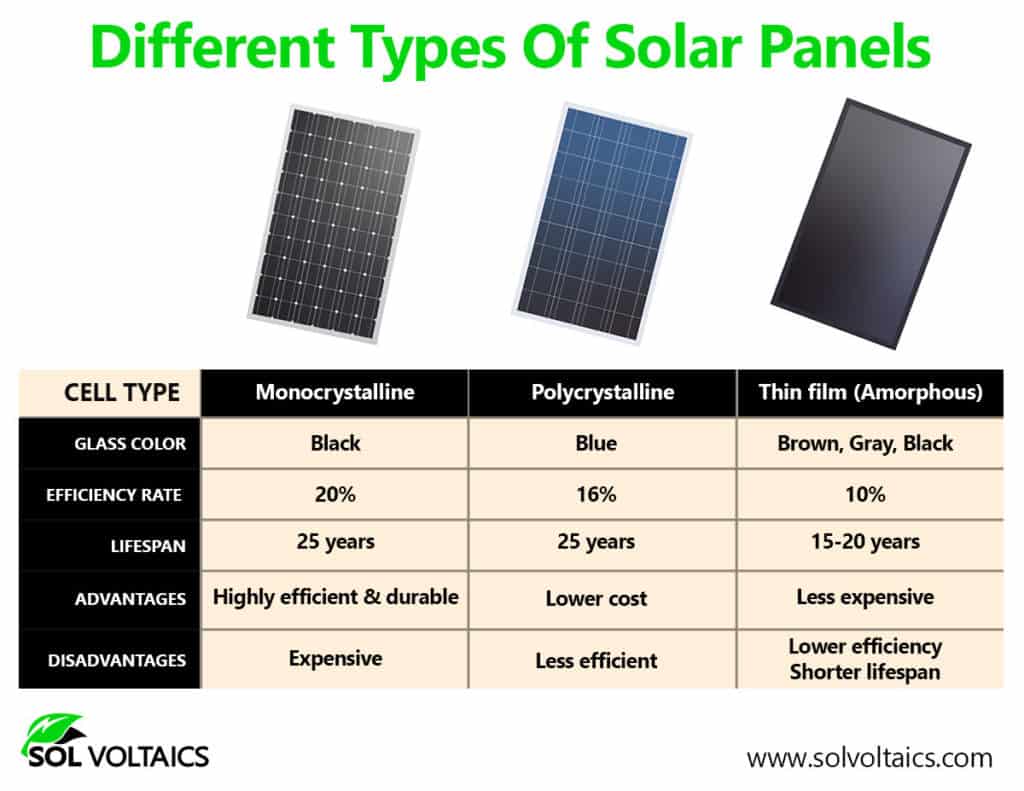
How Do Solar Panels Convert Solar Radiation Into Electricity?
Solar panels are composed of many smaller photovoltaic cells, and each cell is essentially a sandwich of semiconductor panels. This multitude of PV cells makes up a solar panel.
Sunlight is composed of photons, and when they strike the PV cells, the photons knock electrons loose from atoms, which creates the flow of electricity.
To create an electric current, you need to have an electric field, and to have an electric field, you need opposing charges – positive and negative – to create the charge differential and create an electric flow.
To achieve this, the manufacturers of solar panels use different materials in each thin film of silicon to charge them negative or positive as needed.
The lower silicon layer is boron, which reduces the number of electrons and makes this layer positively charged. In the upper layer, phosphorous is added to increase the number of electrons, making this layer negatively charged.
This layering effect creates an electric field between the two layers, and when photons strike the PV cells, the electron knocked loose is pushed out of the silicon field.
Metal plates collect the electrons on the side of the PV cell, which is transferred to wires, so the current flow is induced through the panel.
Do Solar Panels Work On Cloudy Days?
Solar panels use the sun’s electromagnetic spectrum, so they don’t require direct sunlight as you find on those cloudless summer days.
The sun can deliver radiation through the cloud cover, and while it may not be the same level of photon intensity as found on clear days, the panels are still receiving solar radiation.
The only time solar panels may not work is when there is heavy cloud cover and rain or snow, as this would block much of the radiation and effectively reflect it off the clouds and not allow it to reach the ground.
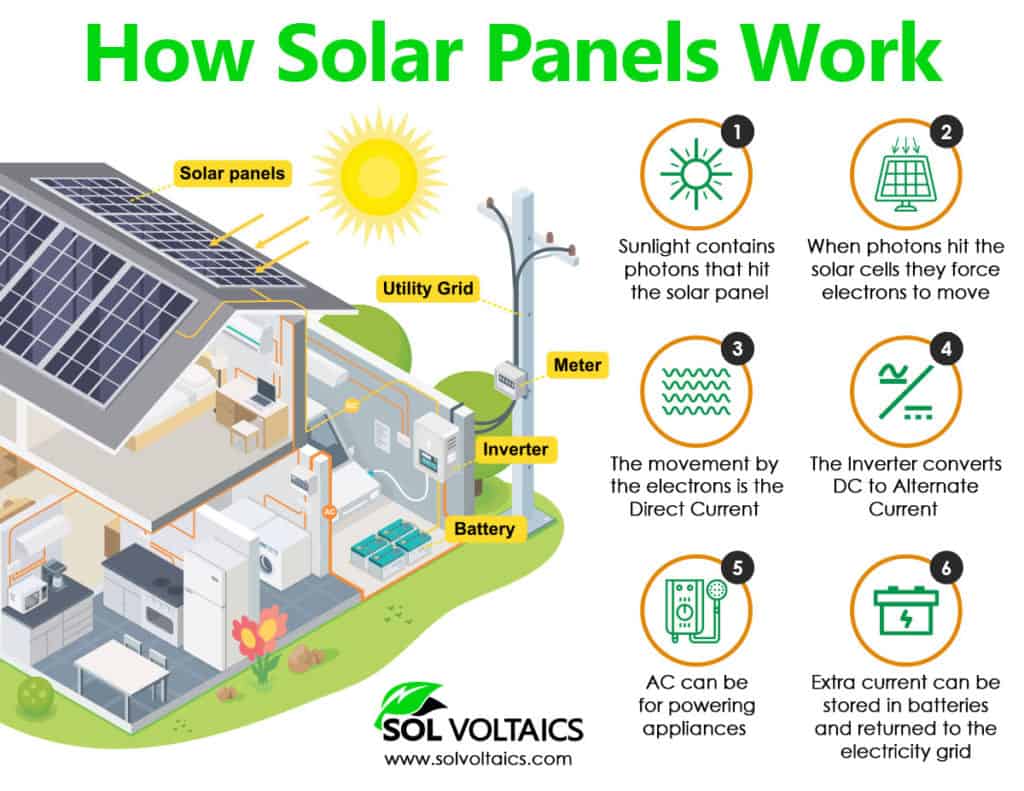
How Does The Electricity From Solar Panels Power Your Home?
With any solar panel installation, especially for a home, you need a few solar panels to power your house, depending on your power requirements.
- Remember that solar panels only produce Direct Current or DC, and most homes run on 110V or 240V Alternating Current (AC). You need an inverter to convert the current produced in the panels from DC to AC.
This device converts the DC received from the solar panels to AC, which can then be used to run your home’s appliances, plugs, and lights.
The Home PV System And How It Works
When installing a PV system for your house, you need a few additional components to allow you to use and store the sun’s energy as electricity.
Firstly, you would need an energy audit to establish the maximum amount of electricity your home requires. This can be done by connecting a logging device to your DB Board, and this would measure the total consumption over some time (usually seven days) to give you a median usage level.
This measurement would indicate how much power you use on an average day and give you an idea of how big your solar PV system would need to be to accommodate the entire load.
Alternatively, you can calculate your total energy load by knowing the wattages of every piece of electrical hardware in your home, from lighting to TVs and appliances, and then get a total of the maximum energy load.
Once this figure is known, you can establish the PV system’s design and structure.
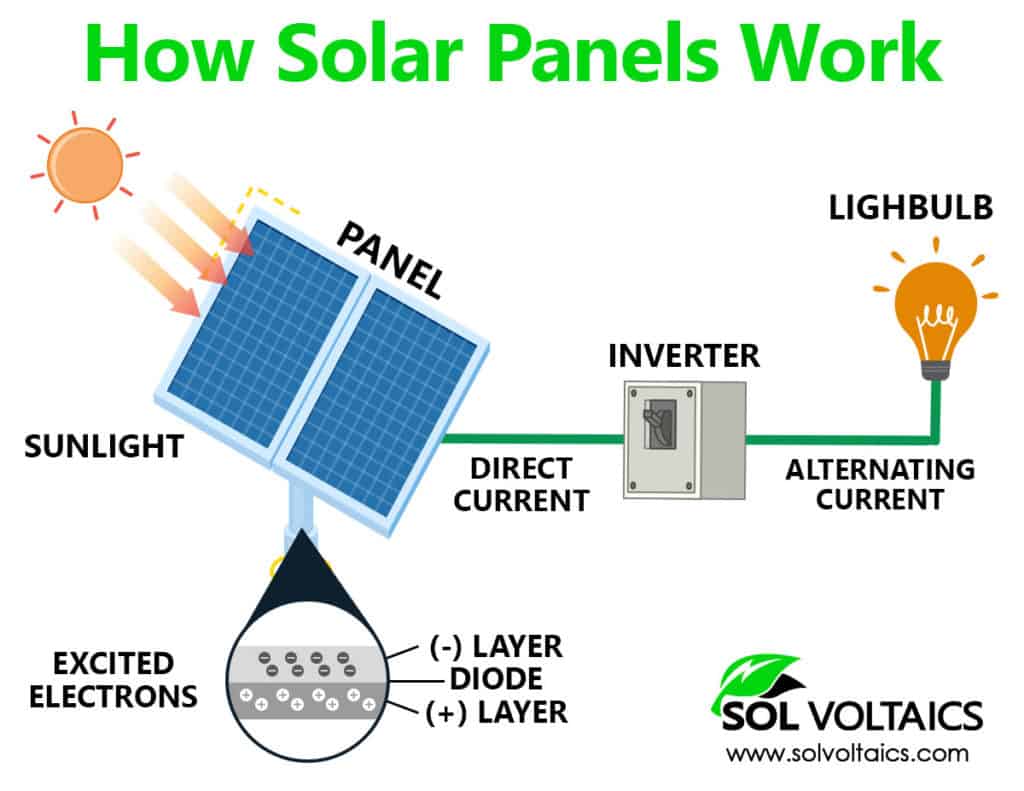
The PV System Structure
The PV system has several components to store and power your home. The solar panels are placed on the roof, and the number of panels and the wattages will depend on the power you need for your home.
The panels are connected, and the combined power and DC electricity is converted to AC and supplied through your home. Most home PV systems have a storage component where the current generated is used to charge connected solar batteries.
This is done using a charger that receives current from the panels and charges the batteries, much like you would charge the battery in your phone or laptop.
Solar Batteries For Storing Current
Solar batteries are usually lithium-ion as these offer the best balance between storage capacity and battery size. As the technology in batteries has evolved, the ability of the latest Lithium-Ion batteries has improved drastically, allowing them to store more power in less space.
There are a few different types of batteries, like lead-calcium, lithium-ion, and saltwater batteries, and each has its pros and cons.
Lead calcium is not efficient and is becoming outdated technology in favor of lithium-ion. There is ongoing research into saltwater batteries as they could prove more efficient and environmentally friendly than lithium-ion.
Charging
Solar batteries can charge and discharge thousands of times before needing replacing, making them super-efficient and cost-effective over the medium to long term.
Once the batteries are charged, they can supply power to the home when the sun goes down or if there is not enough solar radiation to power the system during the day.
Batteries discharge current as DC, which flows through the inverter, which converts it to AC, and then that current is distributed through your home power network.
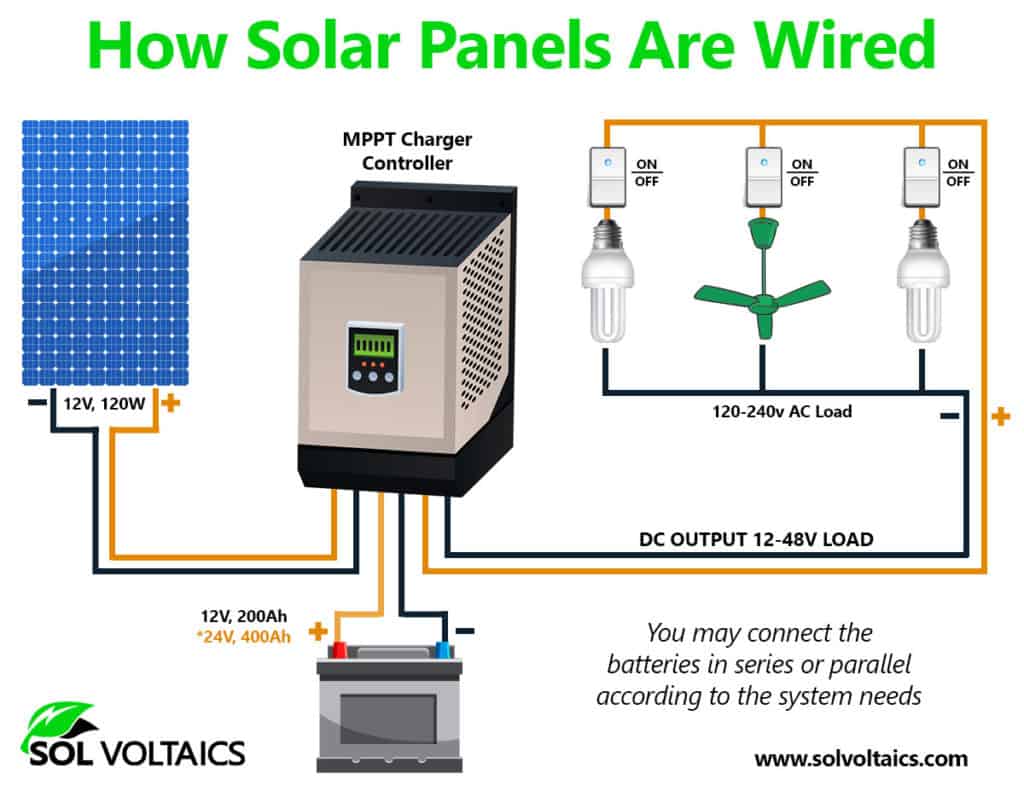
How Many Panels Would I Need For My Home?
The average home typically requires 20-25 solar panels, but this depends on how much roof space you have and whether the roof can support the weight of solar panels.
For this part, we will use average consumption data to give you an idea of how many solar panels you would require for your home.
The average US home uses about 30 kWh per day, and the calculation to determine how many panels you need needs to include how much sun you get per day and the wattage of the solar panels you buy.
So, as a simple example, your home uses 30 kWh of electricity daily. You are buying 350 W solar panels, and you get six hours of sunlight per day that you can use.
- Each panel can generate 1500 watt-hours of electricity per day or 1,5 kWh. To achieve the 30 kWh level, you’d need 20 X 350W panels to create the amount of electricity you need.
Remember that this is only the generation capacity you need to meet your daily energy requirements. The number of batteries and charger specs would depend on how long you need to run your home once the sun is down.
Also, solar panels don’t always generate their maximum capacity due to varying weather conditions.
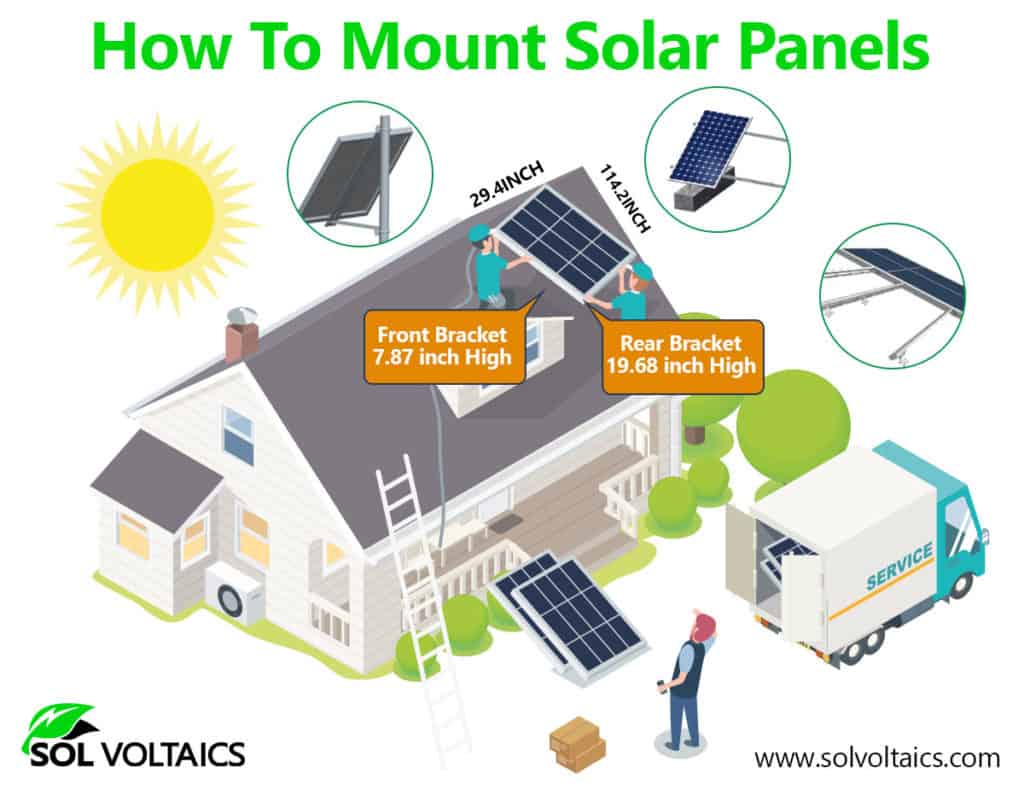
Advances In Solar Panel Design Has Made Them Lighter
The demand for lighter and more efficient solar panels has led to design innovations. Scientists have produced much thinner panels that produce the same generation level as regular glass panels.
According to a report published in Organic Electronics in 2016, ultra-thin solar cells measuring only 1.3 microns or 1/100th the width of a human hair were produced. They could deliver the same capacity as their much bulkier glass PV panels.
Over the past five years, PV panels have become thinner, more efficient, and more affordable. They have been applied to smaller systems like traffic lights, rooftops, and windows on skyscrapers to make those buildings self-sufficient.
As solar panels become lighter and more efficient, the potential for application in residential and commercial installations becomes more economically feasible and practical.
How Long Do Solar Panels Last?
Solar panels can last around 25-30 years with proper maintenance and cleaning. While they are durable, dust, dirt, bird droppings, and leaves can affect the performance and slowly reduce the panel’s capacity to produce electricity.
Having your panels cleaned and serviced regularly will go a long way to keeping your PV system running at optimum performance and reducing any frustrations with poor performance.
How Long Would Solar Batteries Last?
Most manufacturers agree that solar batteries should last from five to fifteen years. Still, the reality is that good-quality batteries can last around 25 years if they are correctly used and not overcharged or depleted regularly.
Regular services and inspection of your system components are advisable. Any potential problems with batteries, chargers, or inverters can be identified and corrected to avoid further depreciation in the system’s efficiency.
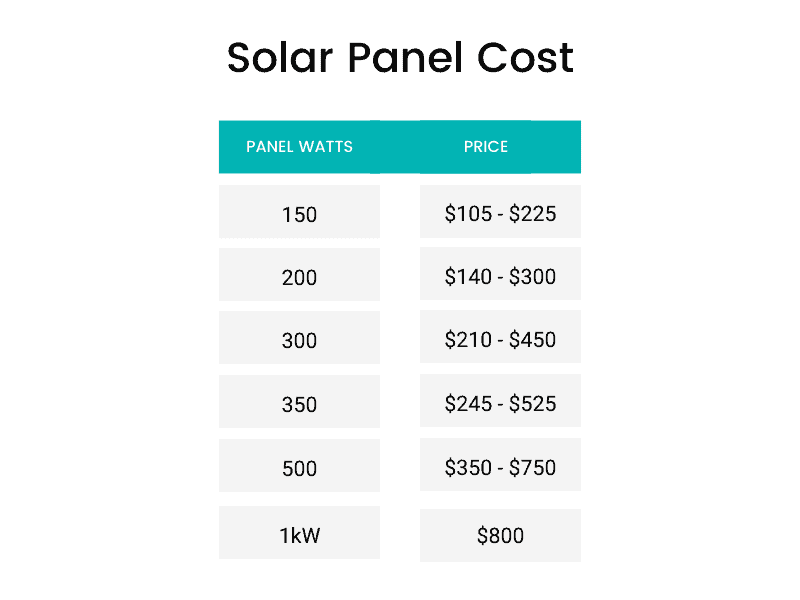
How Much Money Can You Save With Solar Panels?
This is the critical question when deciding whether to invest in solar panels for your home – and this is an investment. While the upfront cost of installing solar panels will be high, this is a medium-long-term investment.
Many states offer tax rebates for installing solar and, and according to energysage.com, you could save $10 000 to $30 000 over the lifetime of your solar system.
There are some variables to consider from state to state, but there is no doubt that installing solar panels or a complete PV system will save you money and keep you on when the power fails.
Resources



